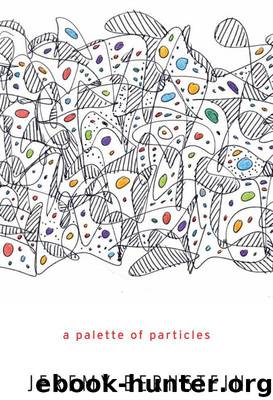A Palette of Particles by Bernstein Jeremy

Author:Bernstein, Jeremy [Bernstein, Jeremy]
Language: eng
Format: epub
Publisher: Harvard University Press
Published: 2013-03-10T23:00:00+00:00
Figure 15. The meson octet.
Now we can return to the Ω−. First, how is it classified, and then how do we deal with the Pauli problem?
Figure 16. The baryon decuplet.
Figure 16 shows the baryon decuplet. Some of the particles are already familiar to you, and with the exception of the Ω−, all the others were known at the time Gell-Mann made his proposal. He was able to tell the experimenters what to look for, and as I mentioned, the Ω− was found at Brookhaven in 1964. In 1969 Gell-Mann was awarded a well-deserved Nobel Prize.
This still leaves us with the Pauli problem, however. Theoretical physicists earn their keep by being ingenious, and what was needed was to invent some distinguishing characteristics for the quarks. Thus the notion of color was introduced. It was actually invented before it was needed. A theorist named O. W. Greenberg had as early as 1962 introduced a kind of statistics that he called “parastatistics.” It was an intermediate step between the Bose and Fermi statistics and was an interesting idea, but at the time it had no applications. Once the dilemma with the quarks was discovered, however, the theorist Yoichiro Nambu (of whom we will hear more later) and his graduate student Moo-Young Han saw how to apply Greenberg’s idea to the quarks. You would take a flavor, such as up, and render it in triplicate by associating it with three different colors, one for each of the three quarks. (Color is simply a mnemonic for the characteristics, of course. Which three colors were actually chosen depended on the nation of origin of the physicists. Americans usually chose red, white, and blue.) When you write the three s quarks for the Ω− you choose one of each color and hence avoid a conflict with Pauli. This triplication shows up in experiments of the Stanford type, so it seems real.
As the years went on new particles were discovered and new quarks were needed. There are now six flavors. Table 3 shows the quarks that are needed to make up the known particles. The new quarks are bottom (b), charm (c), and top (t).
The baryon number of a neutron or proton is 1, which is why each quark has a baryon number of 1⁄3. The masses are given in terms of electron volts (see Appendix 1 for an explanation). The masses of the up and down quarks are not precisely known.
Download
This site does not store any files on its server. We only index and link to content provided by other sites. Please contact the content providers to delete copyright contents if any and email us, we'll remove relevant links or contents immediately.
| Atomic & Nuclear Physics | Particle Physics |
The Complete Stick Figure Physics Tutorials by Allen Sarah(7307)
Secrets of Antigravity Propulsion: Tesla, UFOs, and Classified Aerospace Technology by Ph.D. Paul A. Laviolette(5309)
Thing Explainer by Randall Munroe(3877)
The River of Consciousness by Oliver Sacks(3536)
The Order of Time by Carlo Rovelli(3145)
How To by Randall Munroe(3032)
A Brief History of Time by Stephen Hawking(2960)
I Live in the Future & Here's How It Works by Nick Bilton(2935)
The Great Unknown by Marcus du Sautoy(2645)
What If?: Serious Scientific Answers to Absurd Hypothetical Questions by Randall Munroe(2637)
Midnight in Chernobyl by Adam Higginbotham(2483)
Blockchain: Ultimate Step By Step Guide To Understanding Blockchain Technology, Bitcoin Creation, and the future of Money (Novice to Expert) by Keizer Söze(2444)
Networks: An Introduction by Newman Mark(2359)
The Meaning of it All by Richard Feynman(2299)
Easy Electronics by Charles Platt(2281)
The Tao of Physics by Fritjof Capra(2227)
Midnight in Chernobyl: The Untold Story of the World's Greatest Nuclear Disaster by Adam Higginbotham(2177)
When by Daniel H Pink(2082)
Introducing Relativity by Bruce Bassett(2076)
